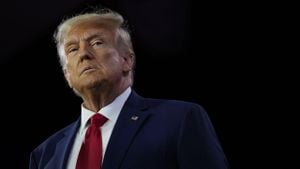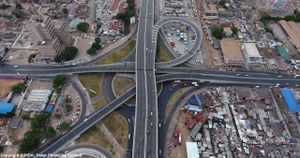China has recently taken decisive action to tackle the rising burden of local government debt, announcing a grand plan amounting to 6 trillion yuan, or approximately $839 billion. This significant move, effective Friday, aims to help local governments refinance their accumulated debts as part of efforts to rejuvenate the nation’s slowing economy, which is currently feeling the strains of the post-pandemic recovery.
At a press conference following the approval, Xu Hongcai, vice-chairman of the National People’s Congress's financial and economic committee, revealed details about the plan’s implementation timetables, set to roll out over the next three years. The program was unveiled amid growing concerns over economic stability, following meetings among key policymakers. The Chinese economy, having faced various upheavals, is on the lookout for solid measures to stimulate growth and tackle mounting governmental financial responsibilities.
Interestingly, this debt swap also sheds light on the alarming amount of hidden debt, defined as borrowing local governments are obligated to but have not disclosed. Finance Minister Lan Fo’an estimated this hidden debt at 14.3 trillion yuan, roughly equivalent to $2 trillion, by the end of 2023. To alleviate this pressing issue, 2 trillion yuan will be allocated yearly from 2024 to 2026, targeting debt reduction to 2.3 trillion yuan, about $320.9 billion, by 2028. Such figures underline the scale of financial maneuvering necessary to stabilize local fiscal conditions.
Further, adjustments to the limits on special bond issuances soared, rising from 29.52 trillion yuan ($4.12 billion) to 35.52 trillion yuan ($4.96 billion). This increase provides local governments with the ability to access more funds needed to support both economic development and community services.
Lan emphasized the enormity of this debt replacement measure, indicating this is no mere tweak, but rather, it signals "a fundamental shift" in China's overall stance on debt restructuring. Inspiring confidence, he assured journalists and officials alike about the controllability of government debt risks, asserting the country's proactive approach will sustain economic momentum.
Analysts echo Lan's sentiments of urgency, advocating for substantial, proactive measures to reinvigorate the economy, which has yet to fully recover from the effects of COVID-19. Local government debt has surged as a consequence of elevated spending during the pandemic, combined with dwindling tax revenues and the downturn of the property industry.
The easing of borrowing restrictions by the central bank late September stirred investor optimism and led to noticeable stock market gains. Economists, nevertheless, argue for more comprehensive actions to stimulate sustainable economic recovery.
While signs of rejuvenation surfaced over the past few months—such as rising auto sales, the return of positivity among manufacturers after months of decline, and surging exports—it seems the Chinese ruling Communist Party has previously favored longer-term structural fixes over immediate crisis responses.
Recent developments indicate heightened anxieties about the sluggishness hindering growth targets of about 5% set for the year. With the government asserting they possess sufficient financial resources, moves like this colossal debt swap are indicative of plans to push monetary strategies for broader recovery.
For some economic observers, especially those hawkish about potential long-term impacts and existing structural problems, the worry for the future looms large. Zhiwei Zhang, chief economist at Pinpoint Asset Management, welcomed the debt swap, calling it “an important policy measure” which could alleviate burdens. Nonetheless, experts like Allen Feng from Rhodium Group express reservations. They argue the swap does not entirely dissolve debts but merely makes them cheaper and easier to roll over, likening the shifts to shuffling deck chairs on the Titanic—an adjustment, yet not transformative enough.
Compounding these issues, the environment surrounding international trade features uncertainty. Chinese officials were actively monitoring recent political developments, including shifts within U.S. governance, fearing renewed economic tensions. Any potential trade conflict could impose substantial stress on the economy, which is already facing hurdles from low consumption rates and persistent housing market troubles.
For many, these debt management strategies spotlight the underlying challenges confronting China’s fiscal architecture. It's more than just numbers—it's about people and their livelihood. Tackling this substantial mountain of local government debt is not merely financial; it’s about safeguarding economic vitality, creating jobs, and ensuring the long-term stability of communities across China.
Looking forward, the emphasis remains on the capability of government authorities to enact real change and genuine growth, promoting developments to match their ambitious visions for the economy without forgetting the basic needs of local communities and governments reliant on stable financing.
While this plan bears the promise of injecting much-needed capital and ideals of recovery, the real question remains whether it’s enough to sustainably lift China’s economy back on the path to recovery and growth, steering it clear of the turbulent waters plaguing so many economic landscapes around the world today.



